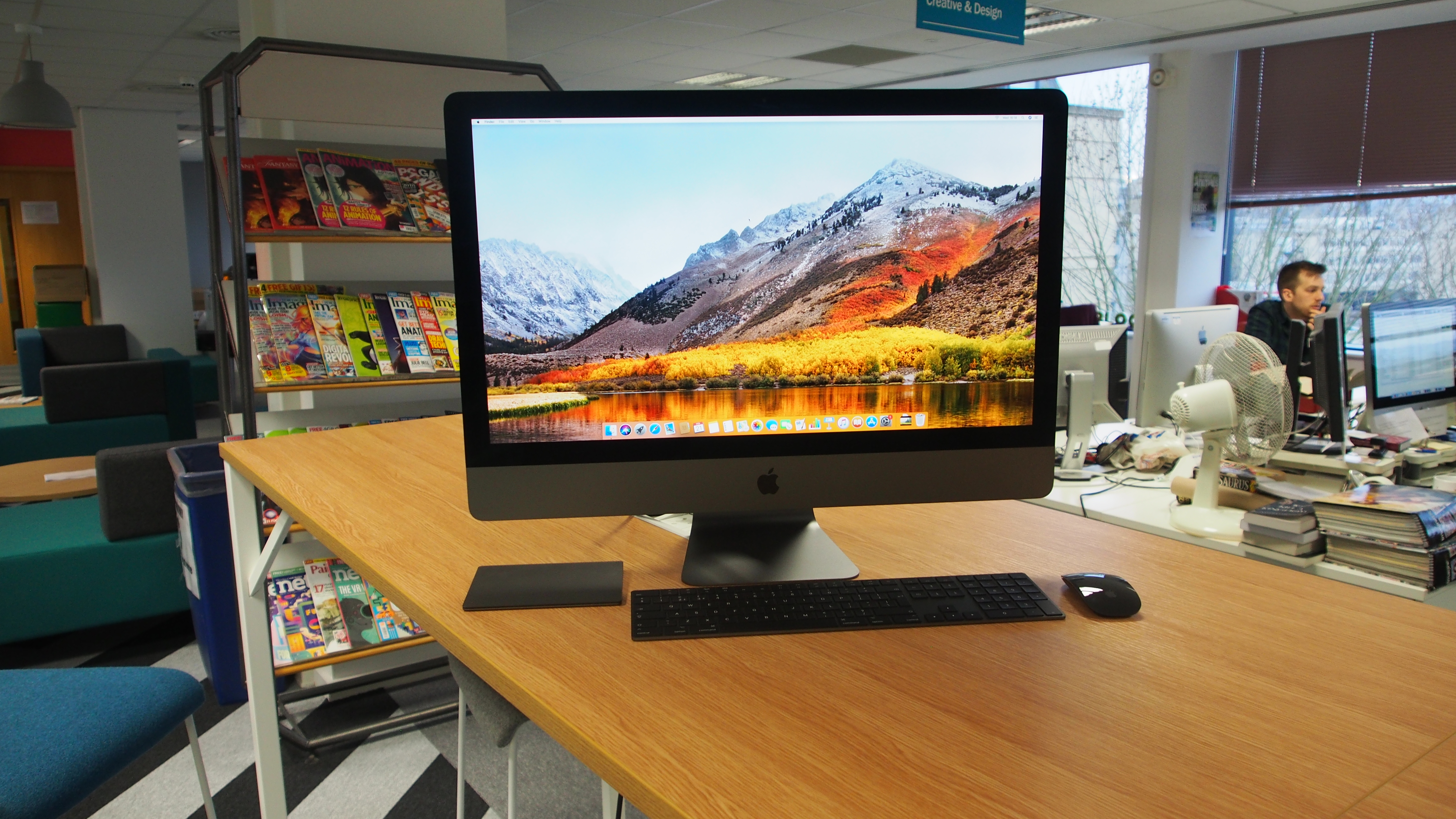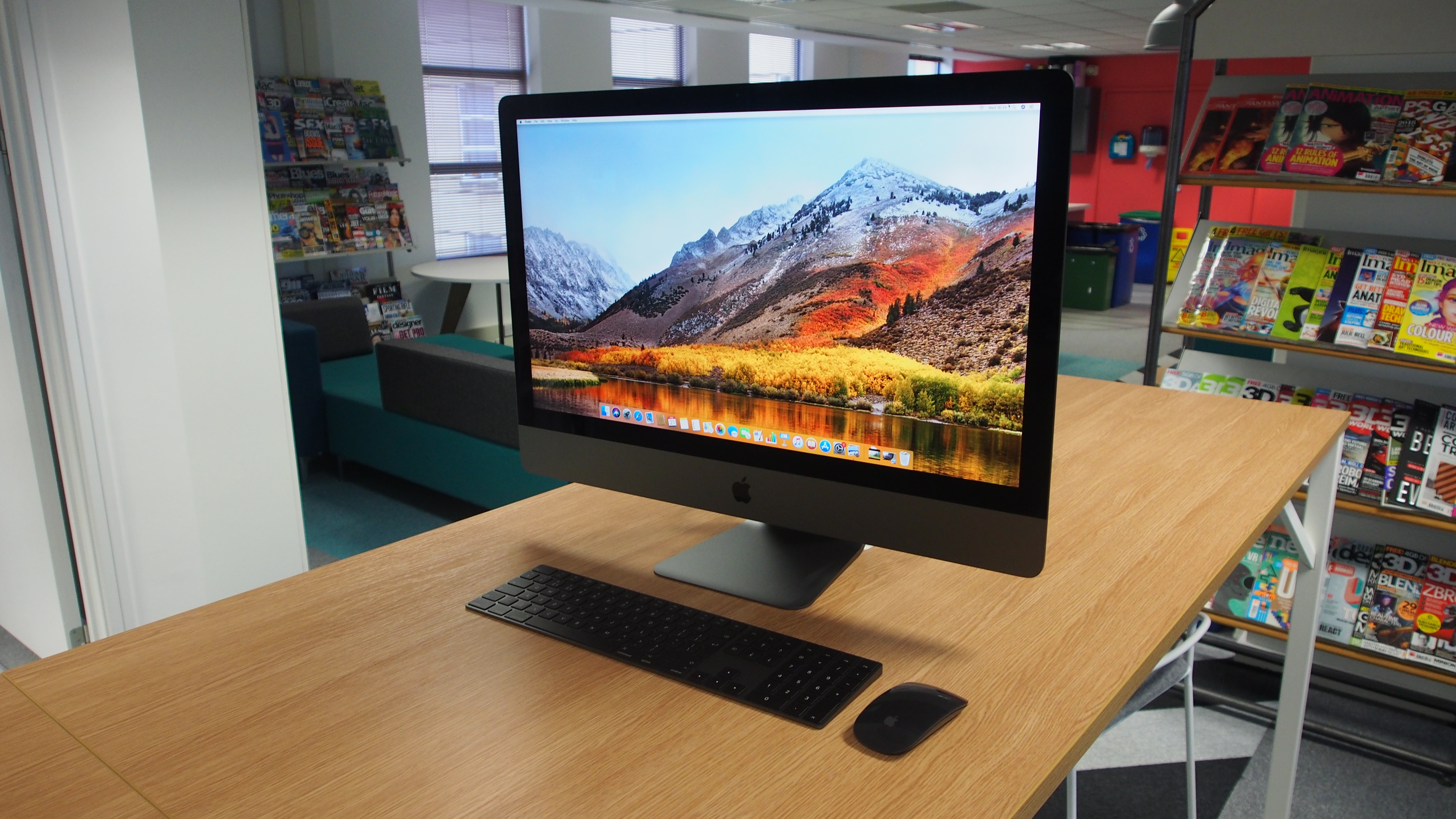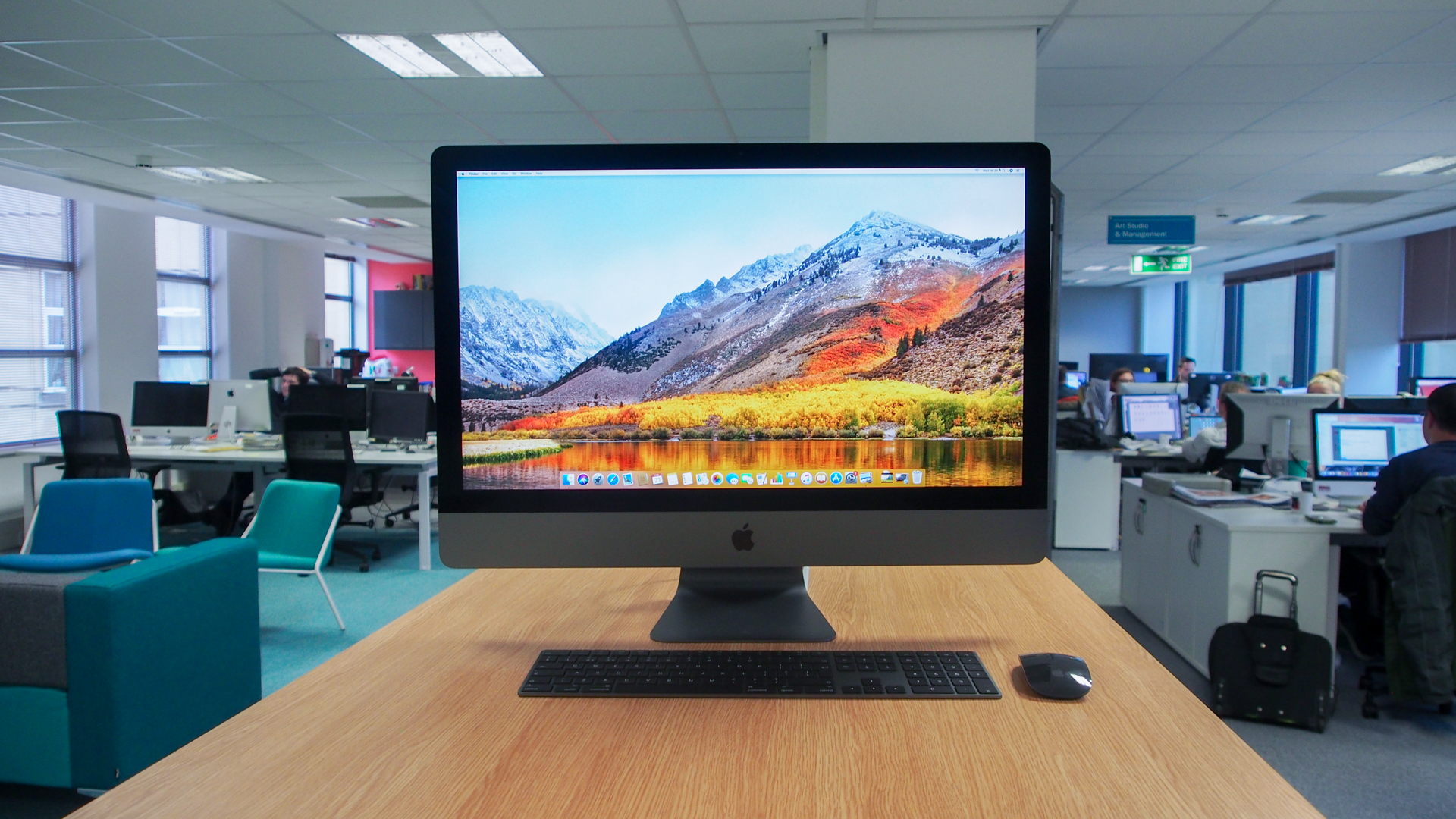Why you can trust TechRadar
Here’s how the Apple iMac Pro performed in our suite of benchmark tests:
Cinebench CPU: 2,049 points; Graphics: 139.09 fps
Geekbench 4 Single-Core: 5,472 ; Multi-Core: 37,070
The configuration Apple sent us is fitted a 3.0GHz, 10-core Intel Xeon-W processor, 128GB of DDR4 RAM and a Radeon Pro Vega 64 graphics card with 16GB of HBM2 memory. With these specs and its extremely high price, you’d expect the iMac Pro to perform like a beast. And, unsurprisingly, it does.
Apple macOS High Sierra feels incredibly smooth and snappy, thanks to the 2TB SSD in the iMac Pro, and the desktop looks stunning on the 27-inch display. Of course, you’re not shelling out a fortune on an iMac Pro just to admire your desktop wallpaper, or play a couple of casual games.
It’s how the computer handles and tackles rigorous workloads that’s most important, and in that regard, the iMac Pro is truly formidable.

Apple has gone to preposterous lengths to set the record straight: the iMac Pro is designed for professionals and the software they rely on. During our time with the iMac Pro, we saw just how well this workstation takes on a variety of demanding workloads and processor-hungry applications, and how it can really speed up your workflow with its power.
The iMac Pro’s performance when working with Final Cut Pro X is an excellent example. Thanks to the processor and graphics card inside the iMac Pro, handling large, high-resolution video files are done much more quickly, as you’re able to edit, add effects, tweak colors and add more to scenes, then watch them happen instantaneously – even in real time.
That means that when you’re doing your work on the iMac Pro, you won’t have to wait for a preview to be rendered, which really saves you a lot of time on a project.
This machine is also capable of on-the-fly editing of 360 video, where you can edit the footage while someone else views the changes on a connected HTC Vive virtual reality headset. This may not be an especially common use case, but it does show the powerful multitasking versatility of the iMac Pro. This is even more impressive considering that the one we’ve tested isn’t even the configuration with the highest specs.
The high-end Xeon processor also makes the iMac Pro a video transcoding behemoth. We used Handbrake to turn a 10-minute-long, 4K 60-frame-per-second (fps) file into a 1080p 30fps file, and it just took four minutes on normal settings. Again, if you find yourself sitting around and waiting for large video files to transcode, then the iMac Pro’s ability to significantly reduce those times more than justifies the price of admission.
Another good example of how the power of the iMac Pro can help professional workflows is with the Twinmotion program, which is aimed at architects for creating virtual representations of their planned buildings. As well as showing the buildings in high fidelity 3D graphics, the application uses physics, weather simulation and more to show what the final building will be like, permitting architects to present their plans to their clients.
All of that is pretty challenging stuff, and the iMac Pro handles it like, well, a pro.
As you see from our benchmark results, this iMac Pro model is a beast when it comes to power. Just by comparing the benchmark results against last year’s iMac – with the Cinebench CPU benchmark score of 2,049cb compared to the iMac’s 544, and Geekbench 4 multi-core score of 37,070 compared to the iMac’s 13,363, you can see what a huge spike in performance the iMac Pro offers.
Without a doubt, the iMac Pro delivers workstation-level performance. If you’re often using a number of Mac applications for work, and you need them to run faster and smoother than ever, then you’ll want to consider leaving the computer you have now and spending some serious money on the iMac Pro.
However, if that level of performance isn’t entirely absolutely essential, you might want to just stick with a standard iMac with its mainstream components – for a much more affordable price.

Final verdict
In many ways, the iMac Pro is presently the pinnacle of Apple’s computing division. It’s undoubtedly the most powerful machine the company has ever made to date – at least until the Mac Pro gives it a run for its money when that becomes available later in 2019.
The iMac Pro packs a punch all while inheriting that stunningly slim design and build quality that iMacs are famous for. Obviously, because of the high power (and price) displayed here, the iMac Pro isn’t the best choice for the general consumer. For day-to-day tasks, and even casual photo or video editing, its enormous power – as well as price – might be a bit of an overkill.
Also, if you need a workstation that packs plenty of power, but you’re not too concerned with looks, there are definitely equally powerful computers on the market that will fit your needs better. Especially if want to be able to open the machine up to tinker and upgrade.
Likewise, even though the P3 color space should be more than adequate for most users, the lack of Adobe RGB support might make some professional artists think again.
On the other hand, if your day-to-day workload necessitates the use of extremely complex, power-hungry software and handling of large files, then the workstation-grade powerhouse
iMac Pro is a no-brainer – especially one this striking. For many professionals, the iMac Pro is a dream come true. Yes, even with that the high price.

Matt is TechRadar's Managing Editor for Core Tech, looking after computing and mobile technology. Having written for a number of publications such as PC Plus, PC Format, T3 and Linux Format, there's no aspect of technology that Matt isn't passionate about, especially computing and PC gaming. He’s personally reviewed and used most of the laptops in our best laptops guide - and since joining TechRadar in 2014, he's reviewed over 250 laptops and computing accessories personally.
